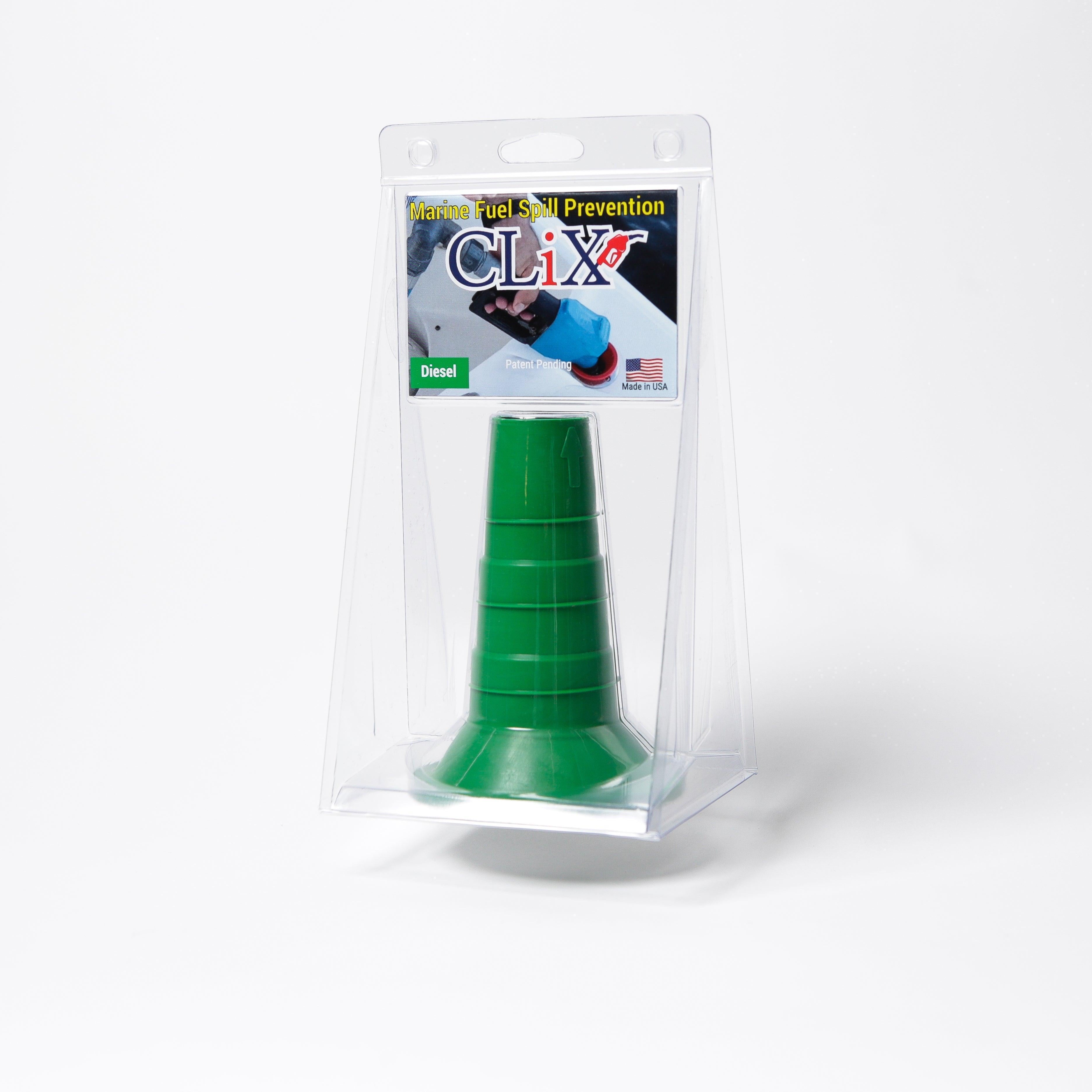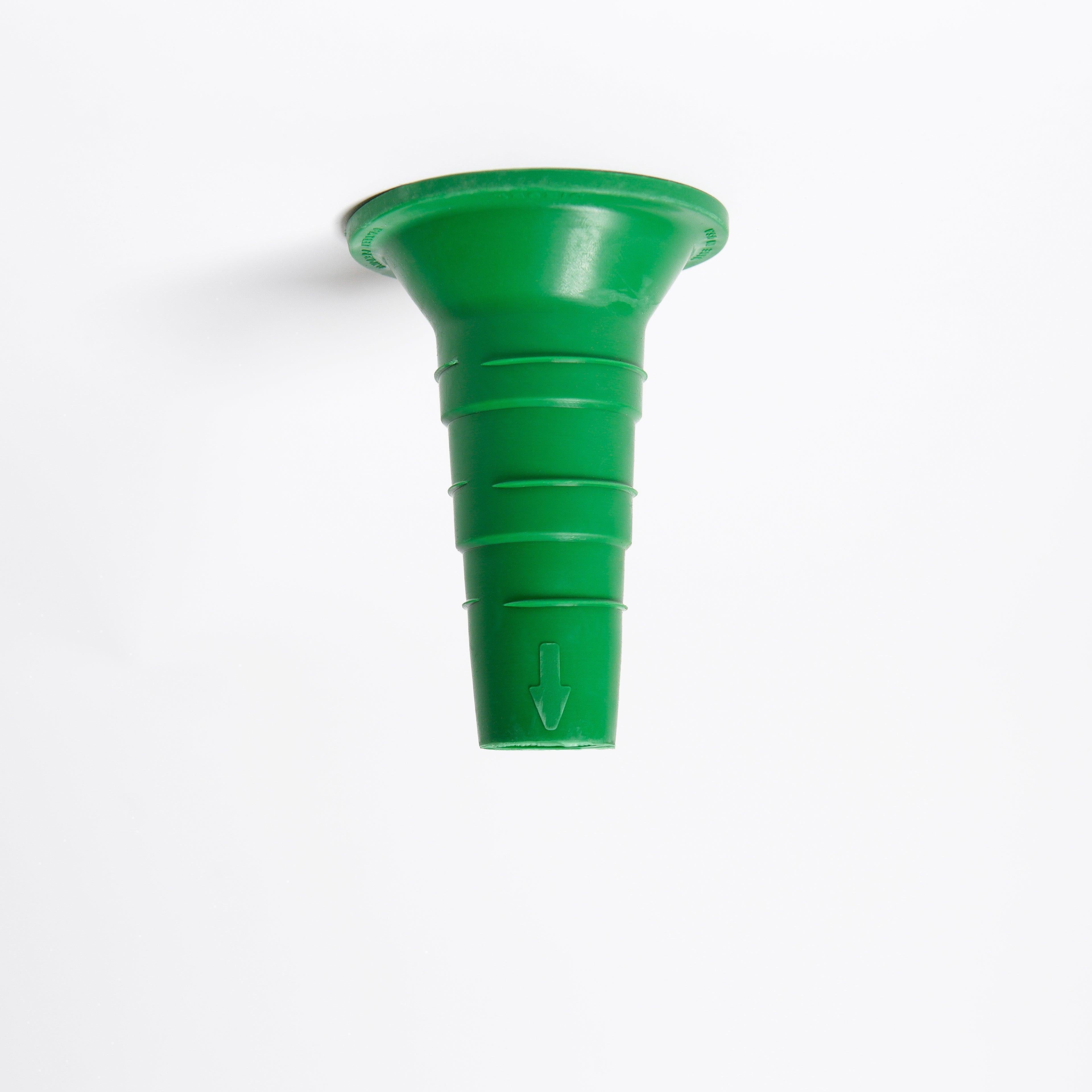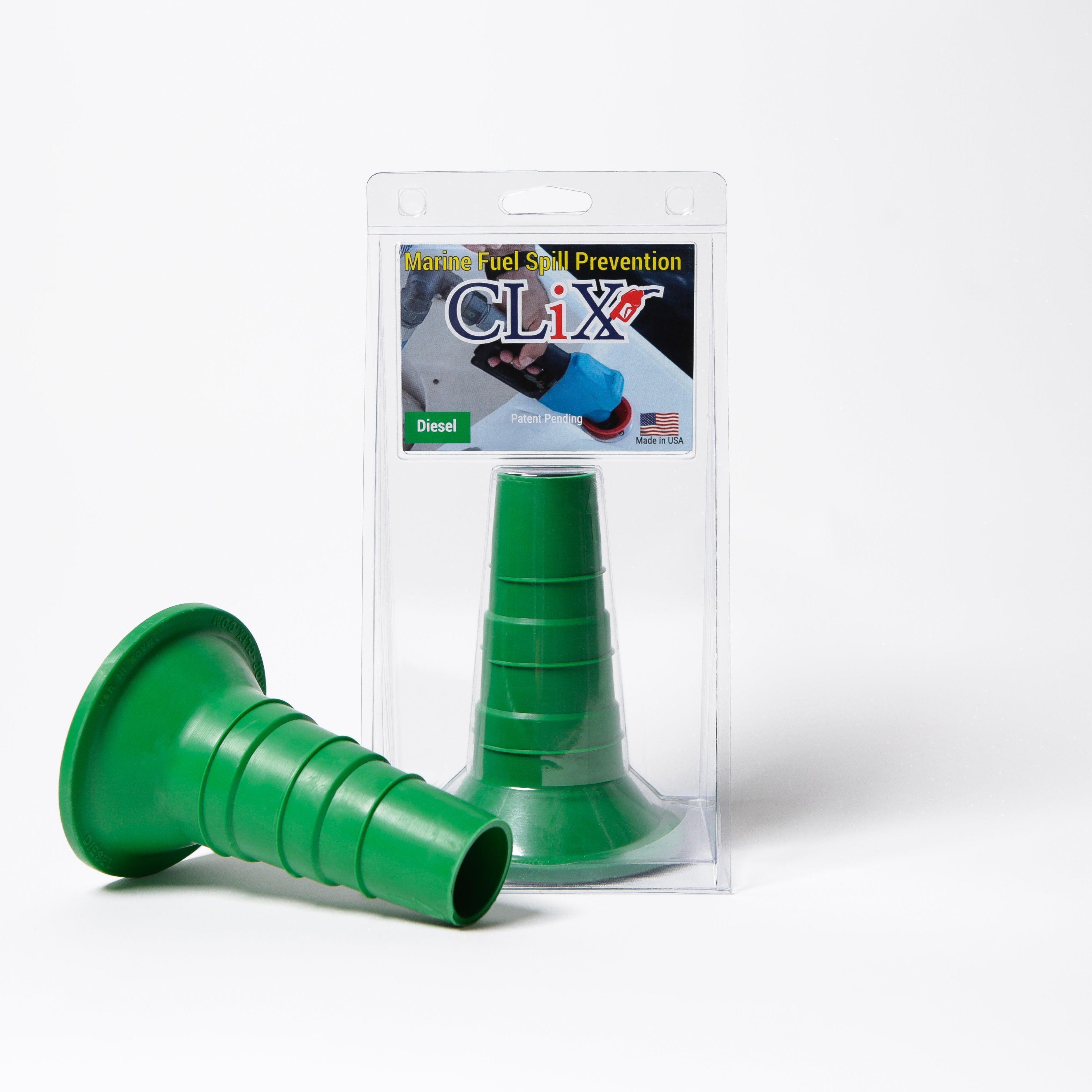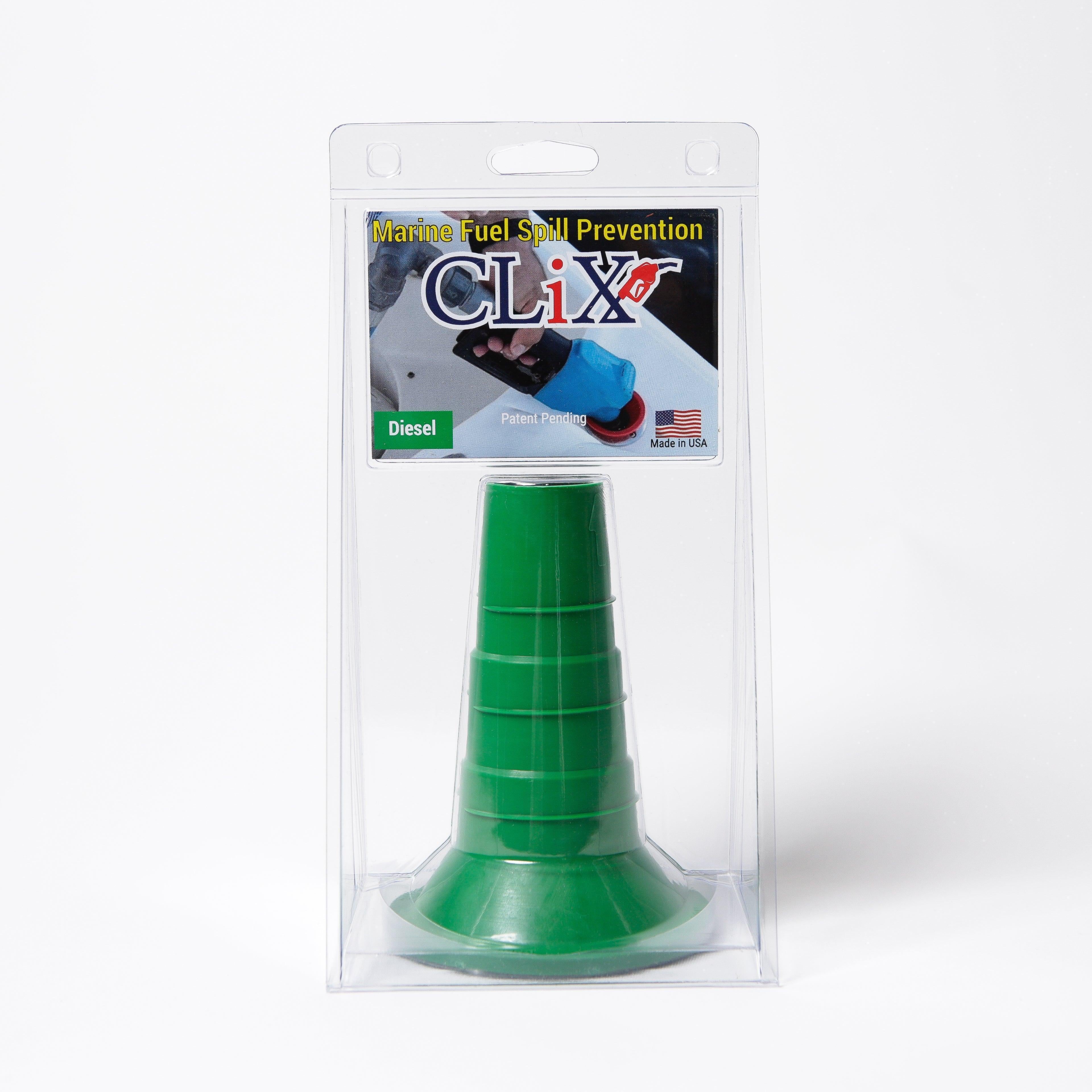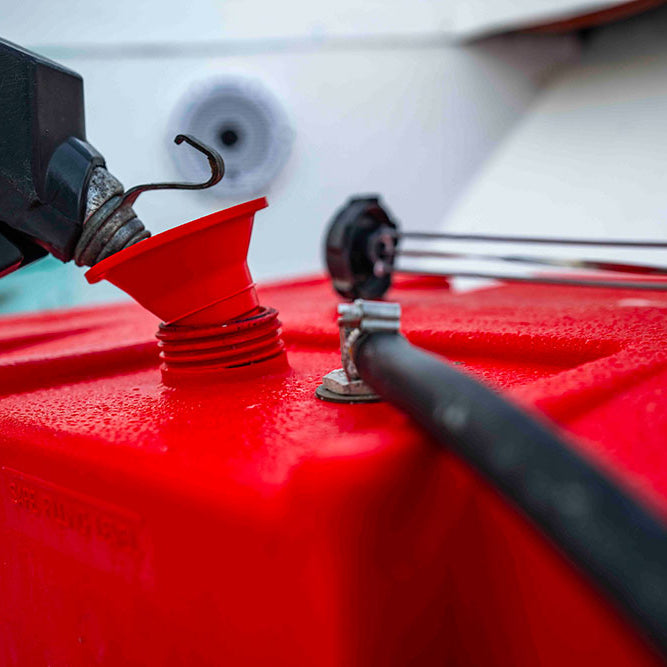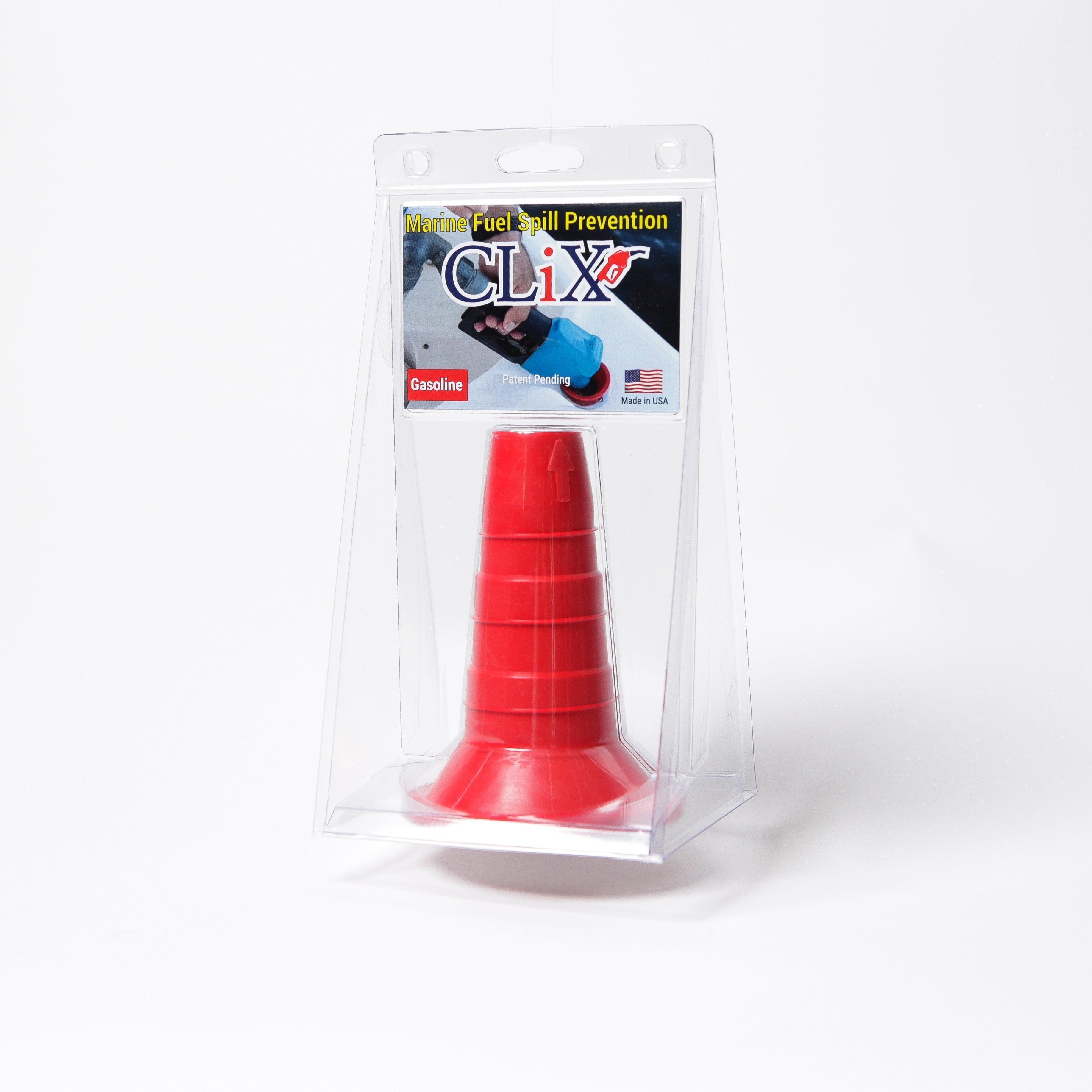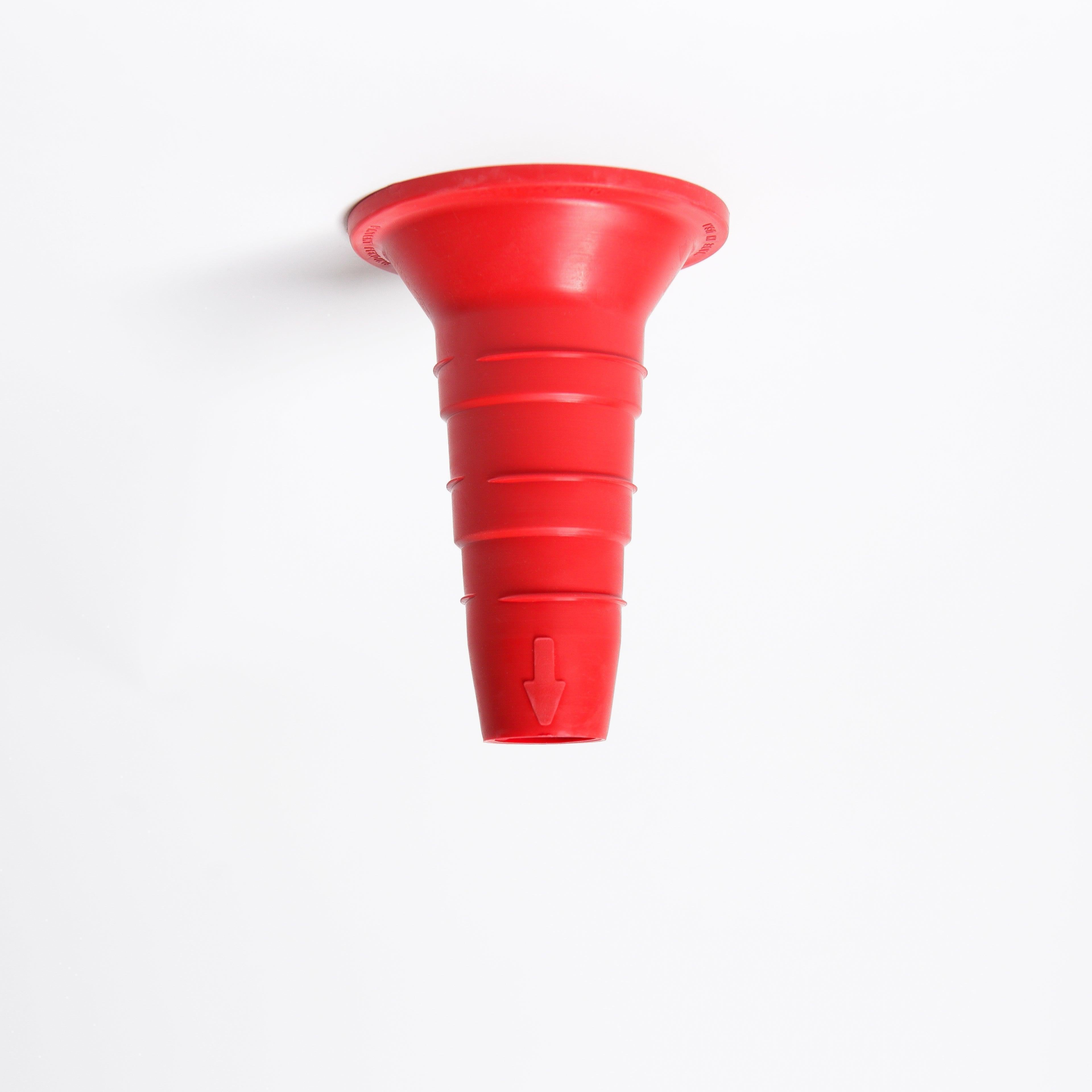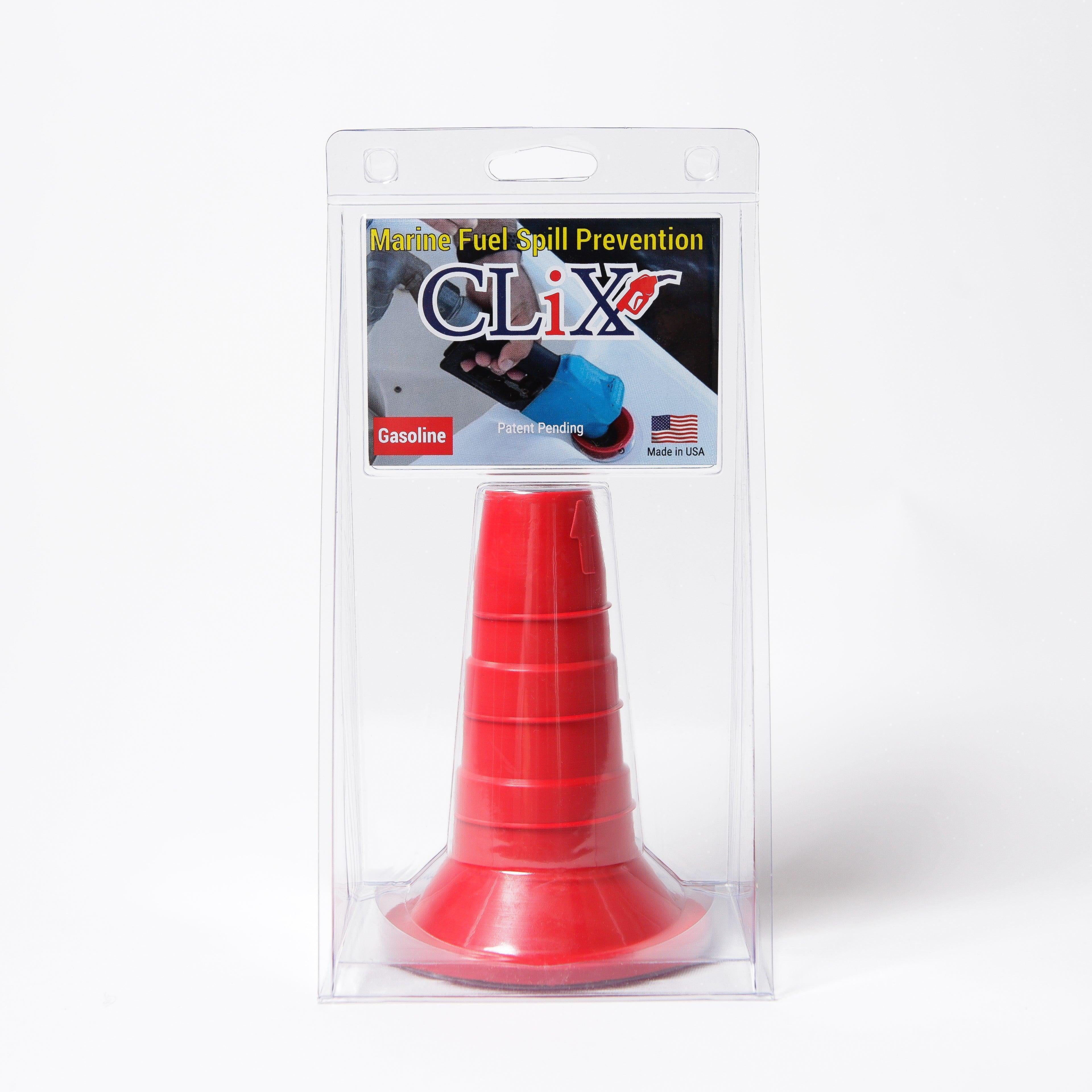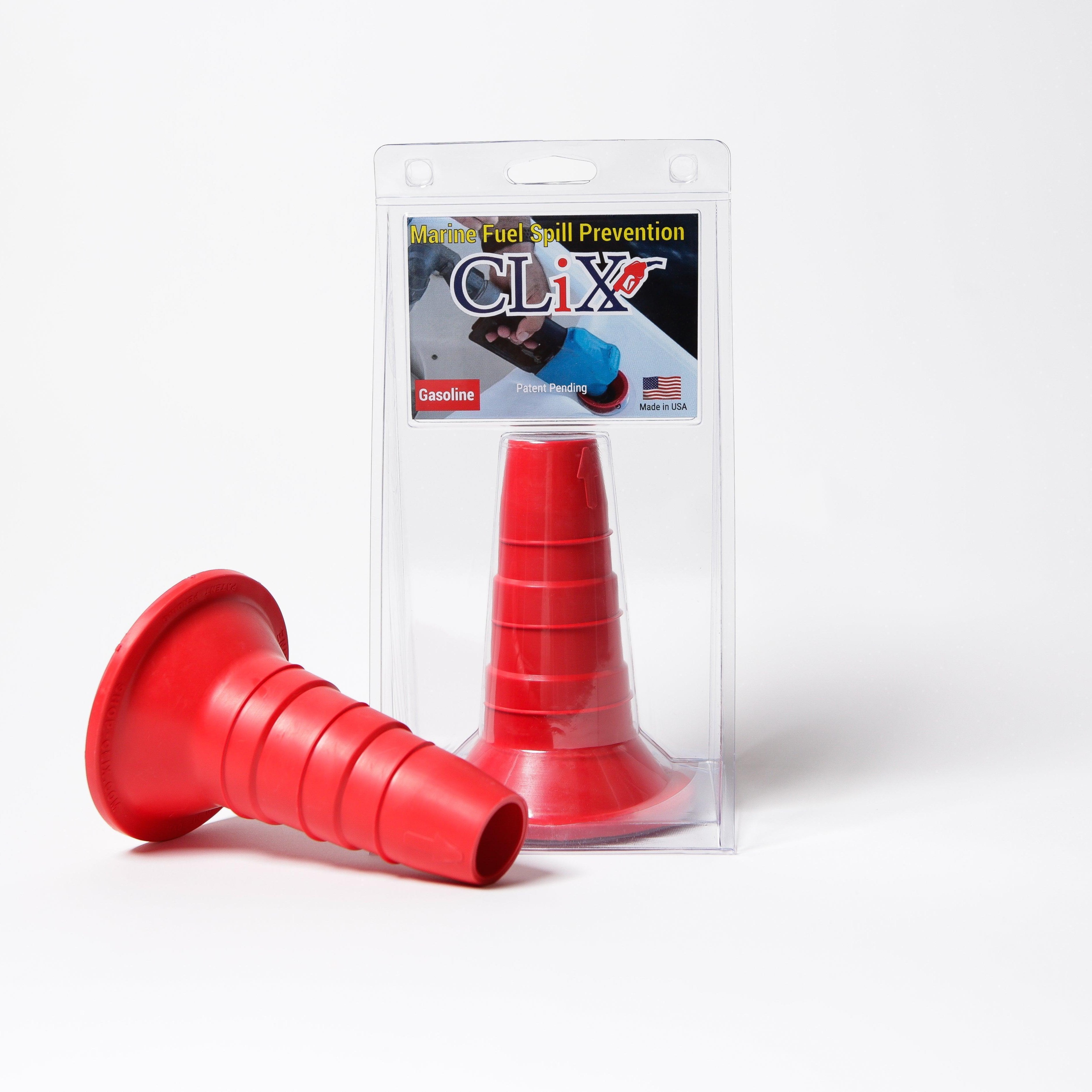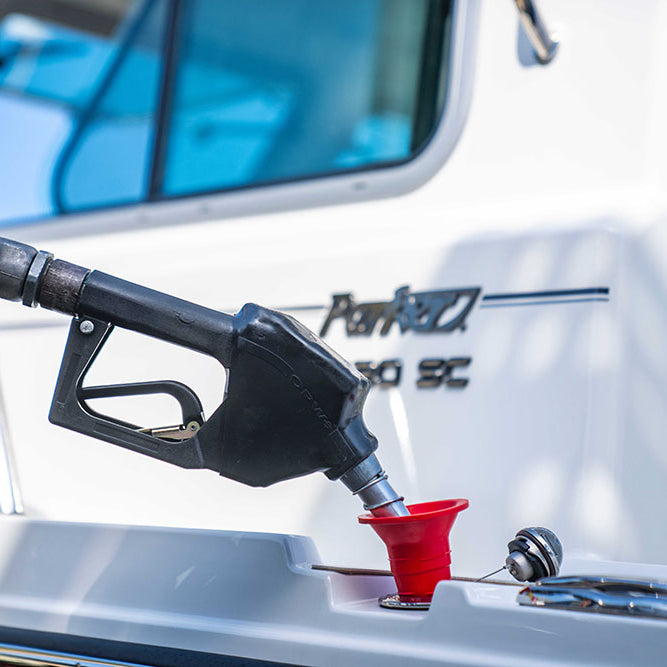Understanding Your Vessel's Digital Fuel Intelligence
Think of your boat's fuel management system as a dedicated financial advisor and security expert, working around the clock right on your vessel. Many boaters assume these systems just show how much fuel is left, but that’s like saying a smartphone is only for making calls. Today's systems are command centers that learn your boat's unique consumption habits, help spot problems before they turn into costly disasters, and convert every drop of fuel into useful information.
This change is about turning raw data into real-world benefits. The industry's growth shows just how valuable this is. The global marine fuel management market was valued at about USD 5.32 billion in 2024 and is expected to climb to nearly USD 7.28 billion by 2032. This growth is fueled by boat owners wanting better efficiency, security, and control over their vessels. You can read more about these marine fuel market projections to see how the industry is developing.
From Simple Gauge to Smart Assistant
To really get a feel for what a modern boat fuel management system can do, let's use a comparison. Imagine blending your car’s trip computer with your home security system, but building it specifically for the harsh marine environment.
- Financial Advisor: Just like a financial advisor tracks your spending to find savings, the system monitors fuel burn with incredible accuracy. It helps you find the "sweet spot"—the most efficient cruising speed—which can seriously reduce your fuel costs. For commercial operators, this means a direct boost to their bottom line.
- Security Expert: A home security system alerts you to an intruder. In the same way, a fuel management system can detect and notify you about unauthorized fuel access or sudden drops in tank levels, which could signal theft or a dangerous leak. This gives you peace of mind whether you're at the dock or far from shore.
Real Stories from the Water
The true value of these systems becomes clear in how people use them every day. For example, some weekend boaters have used the data to uncover slow, ongoing fuel theft that had gone unnoticed for months. Commercial fishing charters have compared their fuel consumption data against catch logs, helping them map out the most profitable routes that balance fuel use with the best fishing spots.
These aren't just abstract features on a list; they are practical tools that solve real problems, improve safety, and ultimately make your time on the water more enjoyable and less expensive.
Essential Components That Power Smart Fuel Monitoring
A great boat fuel management system is a bit like a modern car's dashboard. It brings together physical hardware and smart software, blending sensors, a central computer, and a clear display to give you vital information. Each part has a job, and they all work in concert to change raw data into a clear, useful picture of your boat’s fuel situation.
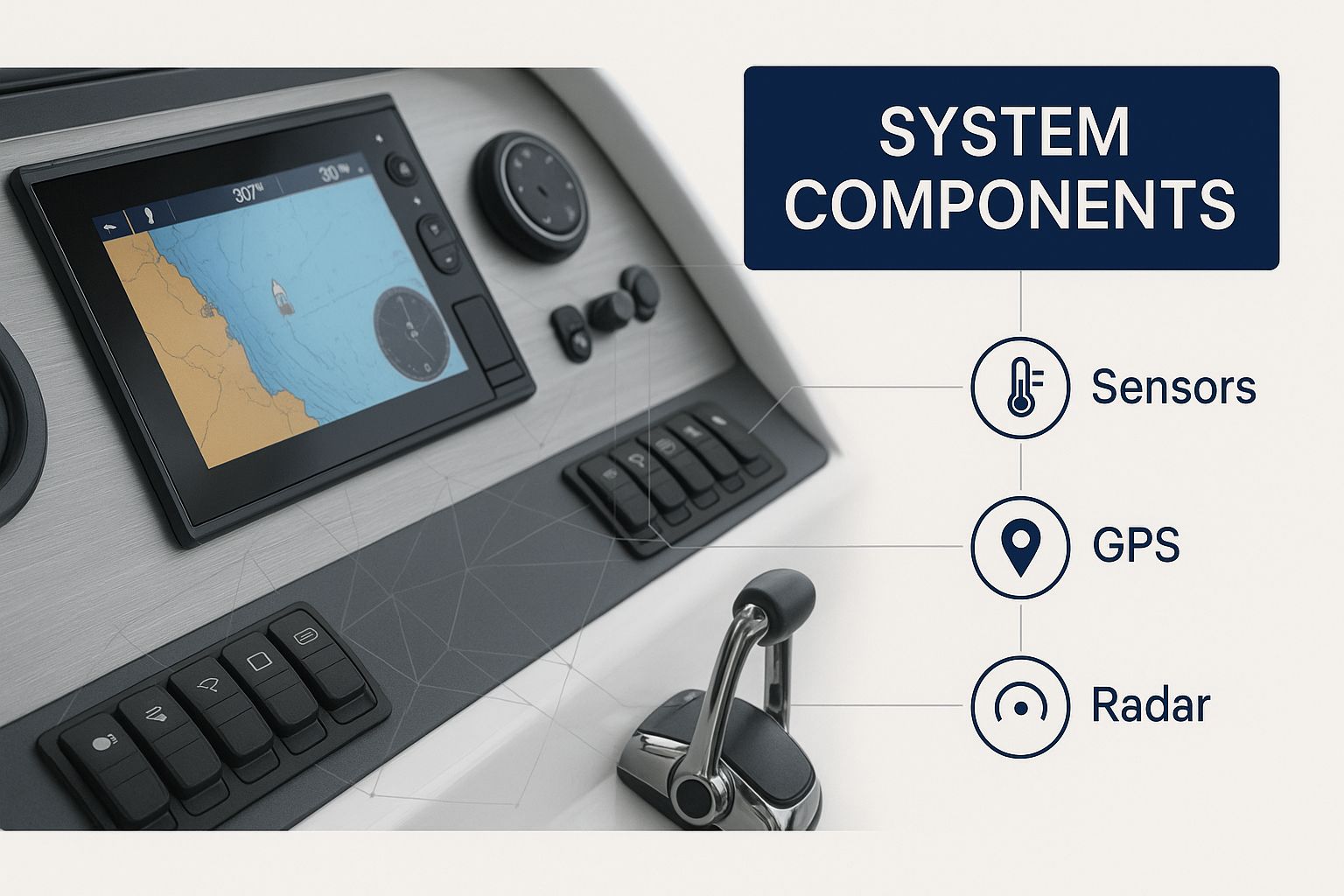
This visual shows how information travels from sensors on the fuel tank and engine to a central unit, which then presents helpful insights to you, the captain. Let's take a closer look at the key pieces that make this all possible.
The Brains and Senses of Your System
At the core of any boat fuel management system lies a network of components that gather and interpret data. Without them, you’re just guessing about what’s really going on with your fuel.
-
Fuel Level Sensors: Think of these as the system's eyes, constantly monitoring the fuel in your tank. Modern sensors use technologies like ultrasonic or capacitive measurement to deliver real-time readings that are far more dependable than an old-school float gauge. This precision means you know exactly how much fuel is on board at all times.
-
Fuel Flow Meters: If level sensors are the eyes, flow meters are the meticulous accountants. Placed in the fuel line, these devices track the exact amount of fuel moving from the tank to the engine. They measure consumption down to a fraction of a gallon, which is critical for calculating fuel burn rates and overall efficiency.
-
Control Unit (ECU/ECM): This is the system's brain. The Electronic Control Unit (ECU) or Engine Control Module (ECM) collects data from both the level sensors and flow meters. It runs the numbers to calculate key metrics like gallons per hour (GPH), miles per gallon (MPG), and how much farther you can go. This unit is what turns a flood of data into valuable, actionable information.
-
GPS Integration: Adding GPS data elevates fuel monitoring from basic to brilliant. By connecting fuel use to your location and speed, the system can pinpoint the most efficient cruising speed for your vessel—its "sweet spot." This helps you optimize your route for significant cost savings. One study found that optimizing engine performance and operational habits can cut fuel use by up to 15%.
-
Display and Communication Module: This is your command center. The display shows all the processed data in an easy-to-read format on your dashboard or a mobile app. A communication module adds a layer of security by sending alerts to your phone for low fuel or suspicious, sudden drops in fuel levels.
To better understand how these parts work together, let's compare their functions and features.
| Component | Primary Function | Key Features | Installation Complexity |
|---|---|---|---|
| Fuel Level Sensor | Measures the volume of fuel in the tank. | Ultrasonic, capacitive, or reed switch technology; high accuracy; continuous real-time data. | Moderate: Requires tank access and calibration. |
| Fuel Flow Meter | Measures fuel consumption rate. | Measures fuel moving to and from the engine (for return lines); provides GPH data; high precision. | Moderate to High: Needs to be installed in the fuel line(s) between the tank and engine. |
| Control Unit (ECU/ECM) | Processes data from all sensors. | Calculates MPG, range, and efficiency; integrates with other boat systems (e.g., GPS). | Low: Often integrated with the display or connects via a network like NMEA 2000. |
| GPS Integration | Links fuel data to location and speed. | Enables route optimization; identifies efficient cruising speeds; logs trip data. | Low: Typically part of the chartplotter or MFD that the system connects to. |
| Display Module | Presents information to the user. | Customizable dashboards; visual gauges and graphs; mobile app connectivity; alerts and notifications. | Low: Plugs into the system's network; app installation is simple. |
As the table shows, while some components like flow meters require a more involved installation, the central control unit and display are often simple to connect. The key takeaway is how these parts build on each other to provide a complete picture of your fuel performance.
Real Benefits That Transform Your Boating Experience
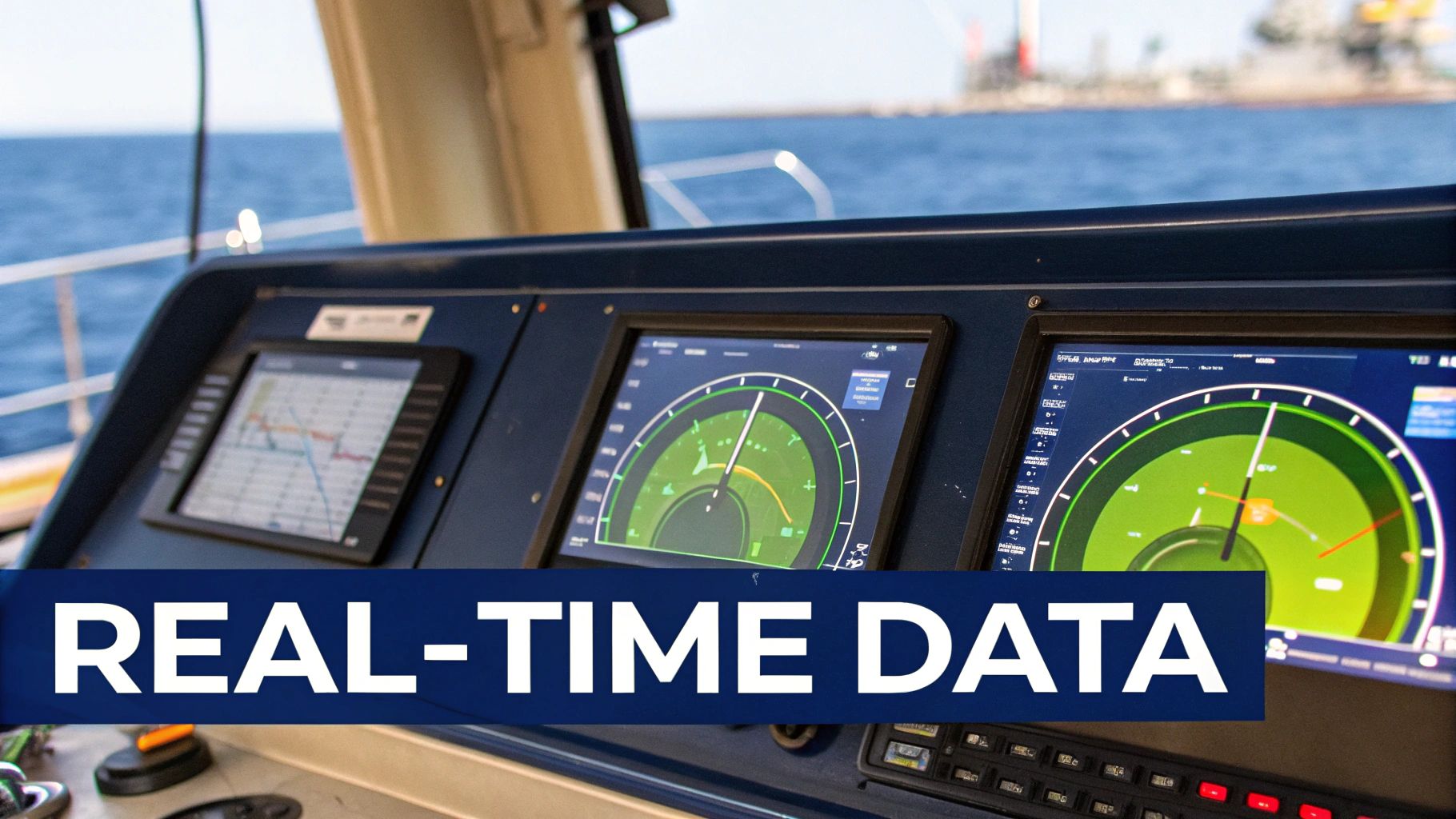
The advantages of adding a boat fuel management system create a positive ripple effect, bringing value that goes far beyond what you see on a simple fuel gauge. While lower fuel bills are the most obvious perk, the true benefit is the added security and operational insight it provides. These systems are a key part of a growing market, valued at USD 1.33 billion in 2024 and expected to climb to USD 2.56 billion by 2033. This growth highlights a clear demand from boat owners for smarter, more secure vessels. You can explore the full fuel management system market research to see the data behind this trend.
More Than Just Saving Money
The financial return is certainly attractive. By fine-tuning consumption and stopping waste, many owners report fuel savings between 15-30%, which helps the system pay for itself. But the advantages run much deeper. Imagine getting a push notification on your phone because your fuel level dropped unexpectedly overnight. This could be a sign of theft or a leak, and the instant alert gives you peace of mind. The system also creates a detailed digital log, which can be critical for insurance claims.
Operational and Safety Enhancements
A modern fuel management system also improves the way you operate your boat. By tracking fuel consumption over time, you can notice small changes that might signal engine trouble long before they cause a breakdown. For example, if your engine starts burning more fuel than usual, it could be an early warning of a failing injector or fouled spark plugs. This proactive approach to maintenance not only keeps you safer on the water but also helps you avoid costly emergency repairs. For more on this, you can read also about how to optimize operations with marine fuel management systems.
These are not just abstract ideas; they are real-world applications that help all types of boaters:
- Charter Captains: Have used detailed fuel logs to catch employees siphoning fuel without authorization.
- Recreational Boaters: Have identified engine problems early by spotting unusual fuel consumption patterns.
- Fishing Fleets: Have matched fuel data with catch locations to pinpoint the most productive fishing spots while keeping operational costs down.
Finding Your Perfect System Match
Choosing the right boat fuel management system is a lot like buying a new vehicle. A commercial contractor needs a heavy-duty truck with a big payload capacity, while a city commuter just needs a small, efficient car. Picking the wrong one leads to wasted money and frustration, and the same logic applies to your boat's tech.
The process starts with an honest look at how you actually use your vessel. A charter fishing captain running offshore every day has completely different needs than a family who takes the boat out on the lake on weekends. The goal is to match the system’s capabilities to your real-world boating habits, not just to a list of impressive features you'll probably never use.
Matching Systems to Your Boating Style
To find your best fit, think about your main activities on the water. A system that is essential for one boater might be total overkill for another.
-
For the Recreational Weekender: Your primary concerns are likely reliability and peace of mind. A basic system that gives you accurate fuel level readings, gallons-per-hour (GPH) burn rates, and low-fuel alerts is usually all you need. The ability to find your boat’s most efficient cruising speed—its "sweet spot"—can seriously cut down on fuel costs over a season, making those weekend getaways more affordable.
-
For the Serious Angler or Offshore Enthusiast: You travel farther from shore and rely on exact data for both safety and performance. A more advanced system with GPS integration is a must-have. This lets you track fuel consumption per trip, calculate your remaining range with confidence, and log data from successful fishing trips to repeat them later. Security alerts for fuel theft are also a huge plus when your boat is docked or on a trailer.
-
For the Commercial Operator or Fleet Manager: Your focus is squarely on the bottom line. You need a powerful system that provides detailed reports on engine performance, idle times, and route efficiency. Look for features like multi-engine support, remote monitoring from a mobile app, and in-depth reporting tools. For commercial fleets, fuel savings of even 10-15% can add up to thousands of dollars in annual savings.
To make this clearer, we've created a simple guide to help you compare your options based on your vessel and how you use it.
Boat Fuel Management System Selection Guide
Decision matrix comparing different system types based on vessel size, usage, and feature requirements
| Vessel Type | Recommended System | Key Features | Typical Cost Range |
|---|---|---|---|
| Small Recreational (under 25ft) | Basic Digital Gauge or MFD Integration | Accurate Fuel Level, GPH Reading, Low-Fuel Alert, Engine Hours | $200 - $600 |
| Mid-Size Cruiser / Offshore Angler (25-40ft) | Advanced System with GPS | GPS Integration, Range Calculation, MPG, Trip Logs, Fuel Theft Alert | $600 - $1,500 |
| Large Yacht / Commercial Vessel (40ft+) | Comprehensive Fleet Management | Multi-Engine Support, Remote Monitoring, Route Optimization, Detailed Analytics | $1,500 - $5,000+ per vessel |
As the table shows, the right system is the one that aligns with your specific needs, from simple efficiency tracking for weekend fun to detailed analytics for running a business.
By carefully thinking about how you boat, you can invest in a boat fuel management system that offers real value. It turns raw fuel data into a practical tool for better savings, improved safety, and smarter operation on the water.
Getting Your System Up And Running Right
Installing a boat fuel management system can be compared to setting up a new smart home. While some parts are simple enough for a weekend project, the most important connections often need a professional's touch to make sure everything works together flawlessly. Proper installation is the bedrock for accuracy, a long service life, and keeping your warranty valid. This isn't just about bolting on new parts; it's about integrating a new digital nervous system into your boat.
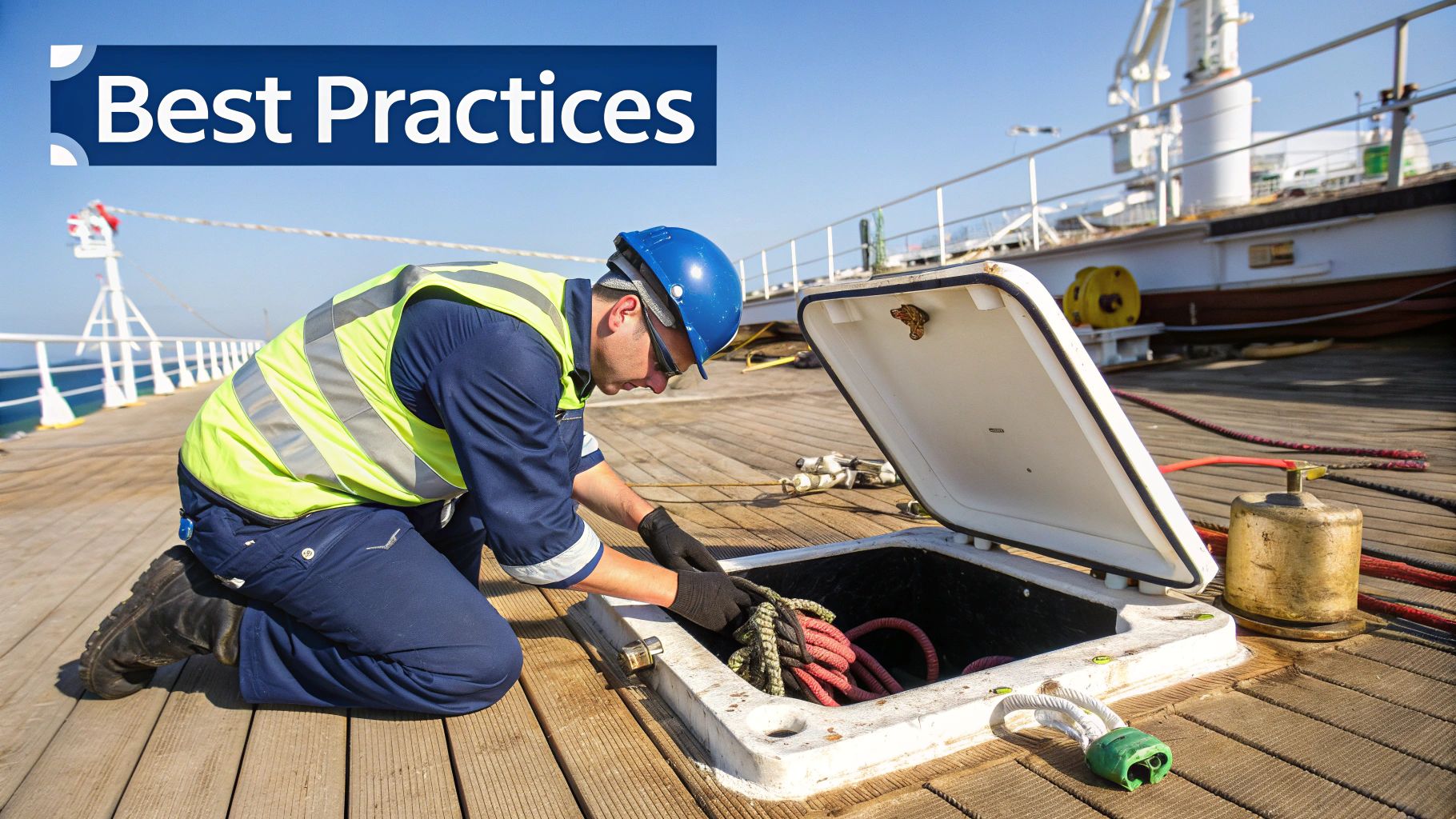
DIY vs. Professional Installation
Deciding whether to install the system yourself or hire an expert comes down to the specific components and your own mechanical experience.
- DIY-Friendly Tasks: For boaters comfortable with their vessel's systems, connecting a display to an existing NMEA 2000 network or setting up a mobile app is usually straightforward. These "plug-and-play" elements are designed with the user in mind.
- When to Call a Pro: Tapping fuel flow meters into fuel lines or wiring sensors directly to the engine's electrical system is another matter entirely. These tasks demand precision and a solid understanding of marine systems. A certified marine technician is crucial to avoid fuel leaks, electrical shorts, or faulty readings that defeat the purpose of the system.
Ultimately, a professional installation is an investment in peace of mind. This is particularly true for more intricate components like fuel injection systems, which are key to optimizing how your engine runs. The market for marine fuel injection systems was valued at USD 5.71 billion in 2024 and is projected to grow, highlighting how essential these parts are to modern boating. You can read the full research on the marine fuel injection market to learn more about its importance.
Preparing for a Smooth Installation
Whether you handle it yourself or bring in a professional, good preparation is essential. Before you begin, take the time to inspect and clean your fuel tanks. A clean tank ensures that no debris clogs the new sensors, giving you accurate data right from the start. You can check out our guide on boat fuel tank safety and maintenance for helpful advice.
After the system is installed, the last step is calibration. This process involves filling your tank to known volumes and adjusting the system settings to match, creating a reliable baseline for all future readings. This initial accuracy check is what gives you the power to monitor performance, identify inefficiencies, and truly manage your fuel consumption.
Keeping Your System Sharp And Accurate
Just like your boat's engine or electronics, your boat fuel management system needs regular care to perform reliably. Think of it as routine upkeep for a critical piece of equipment. This maintenance isn't complex, but it's essential for ensuring the system protects you from fuel-related surprises when you're out on the water.
A Schedule for Peak Performance
You wouldn't go an entire season without checking your engine's oil, and the same principle applies to your fuel management system. Following a simple schedule can prolong its life and maintain its accuracy, stopping small issues from turning into major headaches.
- Routine Checks (Monthly): At least once a month, give all the wiring and connections a visual once-over. Look for any signs of corrosion or wear, which is especially important in saltwater environments. Also, make sure the display is working correctly and logging your data.
- Seasonal Maintenance (Twice a Year): When you're getting your boat ready for the season and again when you're preparing it for storage, it’s the perfect time for a deeper check. Clean the fuel sensors, as they can get gummed up with sediment or deposits from biofuel, which can cause incorrect tank level readings. You should also check the system's calibration by comparing its readings to the amount of fuel you actually pump.
- Software and Data Management (Annually): Check with the manufacturer for any available software or firmware updates. These updates often bring performance fixes and sometimes new features. It's also a smart idea to back up your historical fuel data. This log is a fantastic resource for tracking your engine's long-term health and efficiency.
Troubleshooting Common Issues
Even with diligent maintenance, you might encounter some strange readings. Don't immediately assume the system is faulty. If your fuel consumption data suddenly jumps, it could be an early warning sign of an engine issue, like a failing injector, rather than a system error.
Similarly, if your fuel tank level seems off, recalibrating the system is often the fix. A key benefit of having a well-maintained system is knowing you can trust its alerts. When your boat fuel management system flags an issue, you can be confident the data is telling you something important. To learn more about how accurate readings are tied to your vessel's storage, you can check out our guide on boat fuel tank capacity. By keeping your system in top shape, you ensure the information it provides is always reliable.
Making Your Investment Count: Your Action Plan
Deciding to install a boat fuel management system is a big step. It's about moving away from reactive guessing and toward proactive control. This isn't just another piece of equipment; it's an investment in your boat's efficiency, security, and long-term value. A clear action plan ensures you get the most from this upgrade.
Your journey begins with knowing your starting point. Before you install anything, take a few weeks to carefully track your fuel costs and engine hours. This initial data is your baseline—the "before" picture that will vividly show you the "after" savings. Without this benchmark, you're just estimating your return on investment.
Creating Your Implementation Roadmap
Once you have your baseline, the next step is to map out a practical plan. This means breaking the process into smaller, manageable tasks that fit your budget and boating schedule.
-
Budget Beyond the Box: When planning your budget, look beyond the system's sticker price. Remember to include potential installation fees, especially if you hire a marine technician to handle complex tasks like fitting fuel flow meters. Also, account for any small, ongoing expenses like software subscriptions.
-
Vendor Vetting: When you research different vendors, look for substance, not just flashy marketing. Ask specific questions about the system's accuracy, what the warranty covers, and the quality of their customer support. A trustworthy vendor will offer clear documentation and have good reviews from boaters with vessels like yours.
-
Timeline Development: Plan the installation for your boat’s off-season or during a scheduled maintenance period. This helps you avoid missing any precious time on the water. A standard installation can take anywhere from a few hours to a whole day, depending on how complex the system is and the layout of your boat.
Setting Realistic Goals and Measuring Success
With your boat fuel management system installed and calibrated, it's time to set clear, achievable goals. For many boaters, a 15% reduction in fuel use is a realistic target, especially when you use the system's data to fine-tune your speed and operations. You achieve this by discovering your boat's "sweet spot"—the most efficient cruising speed that gives you the best miles per gallon.
To stay on track, create a simple accountability checklist:
- Review trip data weekly to spot trends in your fuel usage.
- Check your fuel consumption reports every month.
- Compare your recent fuel bills to the baseline you established before installation.
This methodical approach turns your system from a simple monitor into an active partner in managing your boat.
If you’re ready to stop guessing and start knowing precisely what’s happening with your fuel, it's time to find a solution that also offers security and convenience. The CLiX system prevents expensive and damaging fuel spills, giving you complete confidence at the pump. Find out how CLiX Fueling Solutions can make every drop count.

